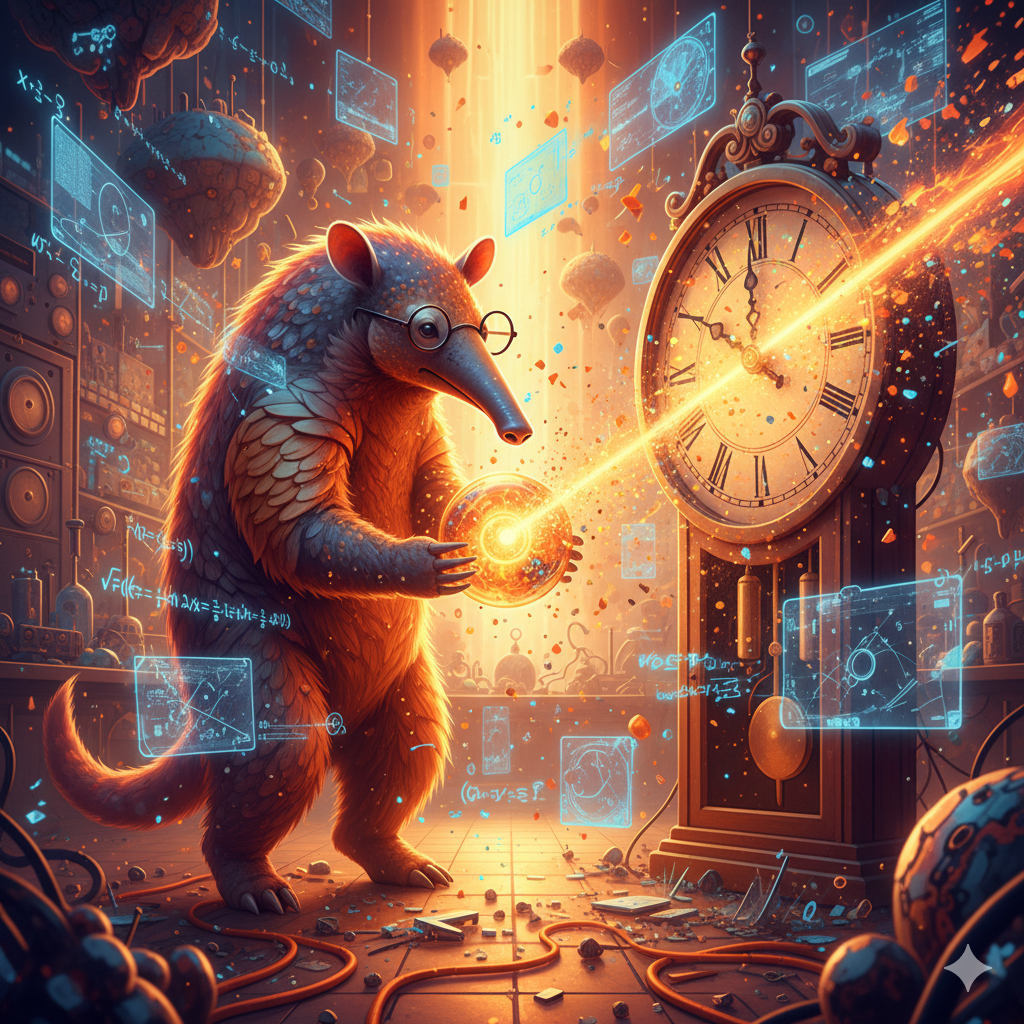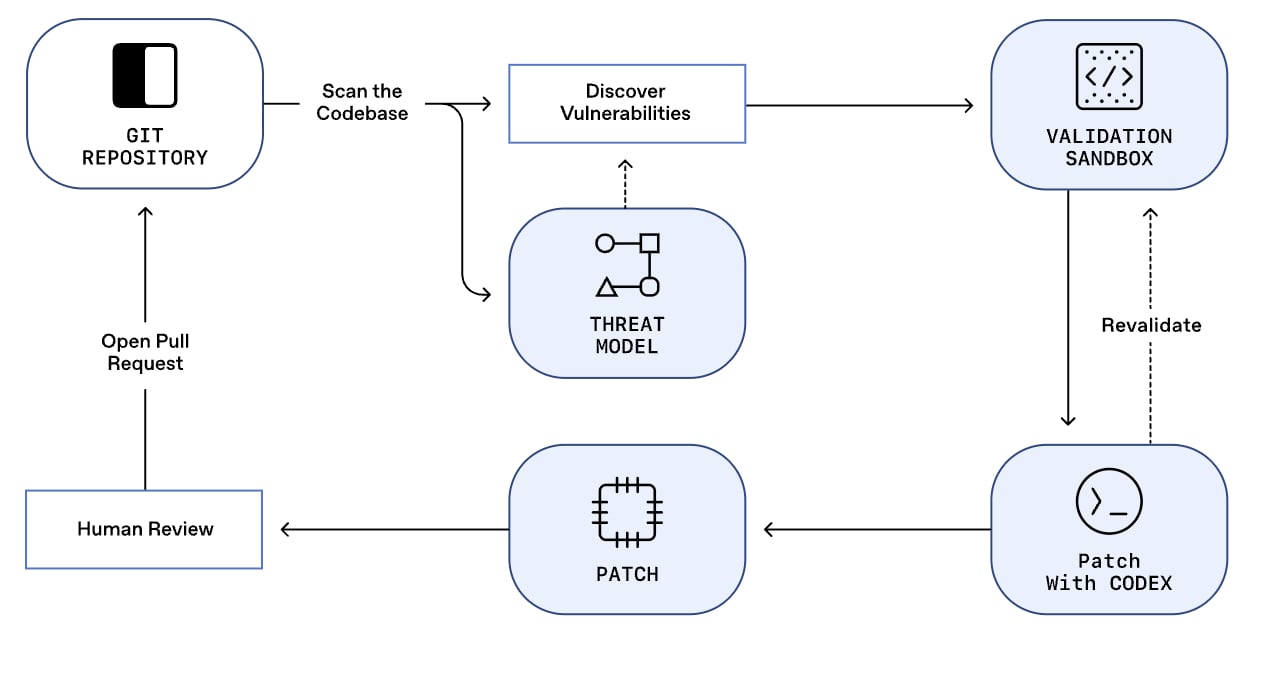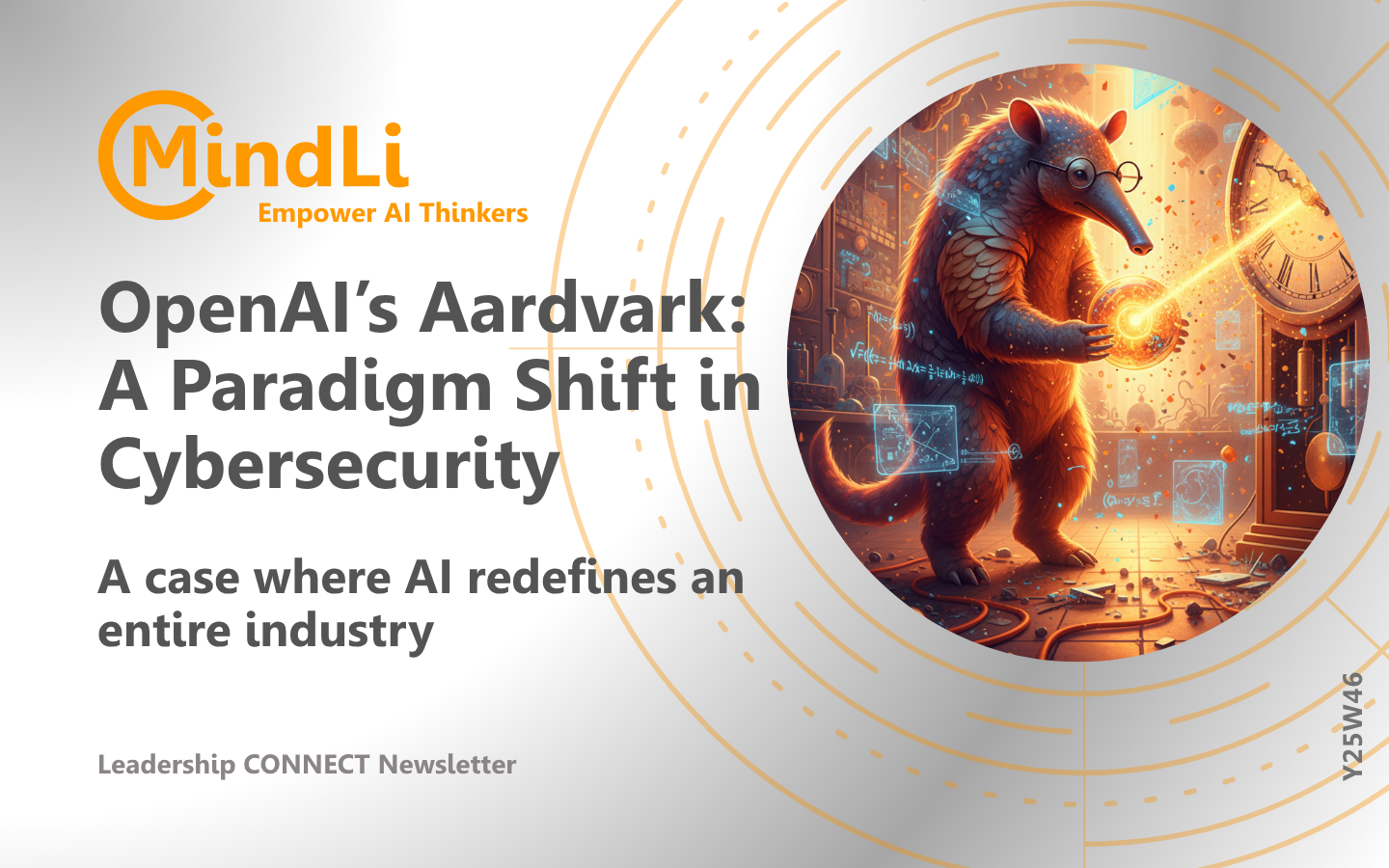Greetings, AI Thinkers,
Three years into the AI revolution, we’ve seen AI change how we write, search, and create — but Aardvark shows how AI can change an entire industry.
In this guest post (conceived and co-authored with MindLi friend Esti Peshin, our go-to expert for everything cyber), we cover:
👉 Why we need to look for paradigm shifts in the age of AI.
👉 What OpenAI’s Aardvark actually is and how it works.
👉 How it could transform the entire cybersecurity ecosystem.
Aardvark is an autonomous AI security researcher that continuously analyzes code, finds vulnerabilities, tests exploitability, and even suggests fixes — redefining how organizations protect their digital backbones.
It marks the move from defensive cybersecurity to proactive, intelligent protection, where AI agents continuously monitor, test, and self-heal before breaches occur.
And it’s always good to remember: You won’t be replaced by AI, but by someone who understands AI.
Let’s Think,
Dr. Yesha Sivan and the MindLi Team
P.S. Feedback? Email me.
OpenAI’s Aardvark — A Paradigm Shift in Cybersecurity: A Case Where AI Redefines an Entire Industry (Source: Yesha On Human Thinking)

Searching for Paradigm Shifts
We are celebrating about three years since AI (in its newest form) has entered our lives. AI has changed how we search, write, and even think. Over a billion people are already using AI to learn, communicate, and fix their work.
This is what we call the “basic use.” But AI is also transforming entire industries — creating visible paradigm shifts:
- Robo-taxis are roaming the streets of cities like San Francisco, Phoenix, and Shanghai — with firms like Waymo and Baidu gaining ground.
- AI-driven X-ray diagnostics in healthcare are already used by hospitals worldwide — helping doctors at places like Mayo Clinic (USA) and Apollo Hospitals (India) detect diseases faster and more accurately.
- Generative AI in filmmaking is reshaping how movies are created — studios now generate full storyboards, scripts, and visual effects with AI tools.
- AI-powered trading systems are transforming finance — enabling near‑real‑time risk assessment and autonomous investment decisions.
Businesses worldwide are searching for such paradigm shifts to win rather than be dwarfed by competitors.
OpenAI’s Aardvark represents exactly such potential in cybersecurity — a field where billions are spent yearly to protect the world’s digital infrastructure (and even more are lost when protection fails).
Understanding OpenAI’s Aardvark
Software security remains one of the most critical—and challenging—frontiers in technology. Each year, tens of thousands of new vulnerabilities are discovered across enterprise and open-source codebases. Defenders must find and patch these flaws before attackers exploit them. OpenAI’s Aardvark aims to tip that balance in favor of defenders.
Aardvark is an autonomous AI security researcher that helps developers and security teams discover and fix vulnerabilities at scale. It continuously analyzes source code repositories, identifies weaknesses, assesses exploitability, prioritizes severity, and proposes targeted patches.
Unlike traditional methods like static analysis or fuzzing, Aardvark uses LLM-powered reasoning to read, understand, and test code as a human researcher might — simulating adversarial thinking but aligned with defense. See the following Visual.
Here’s a visual of the Aardvark Agent workflow:

For the complete technical overview, see OpenAI’s official announcement [1].
Aardvark as a Paradigm-Shift Bellwether
Aardvark signals a new era: from reactive security to proactive, intelligent protection. Instead of patching vulnerabilities after breaches occur, AI agents like Aardvark can continuously monitor, test, and self-heal systems before damage spreads. This transforms cybersecurity from a defensive posture to an adaptive, evolving ecosystem.
The implications extend beyond security. The same logic — autonomous reasoning agents embedded in core workflows — will shape future industries from healthcare to finance. In that sense, Aardvark is not just a tool; it’s a preview of AI’s next frontier: agents that think, act, and safeguard.
In the long term, such capabilities will connect directly to organizational, national, and potentially global backbones, creating an ecosystem that continuously identifies and mitigates cyber risks — much as credit card fraud prevention systems revolutionized financial security.
Today, when a new cyber vulnerability emerges, it’s not always automatically detected. Once it is found, there’s often a window of exposure — the time it takes for engineers to create patches for vulnerable products, for vendors to distribute updates, and for organizations to install them. During that period, systems remain at risk.
It’s a bit like the credit card industry needing hours or days to spot each fraudulent charge.
In the future, cybersecurity will become seamless. Cybersecurity will be woven into the digital backbone itself. AI agents will detect vulnerabilities instantly, others will generate patches, and yet others will deploy the fixes automatically. The entire cycle will shrink from weeks to days or even minutes.
The cybersecurity market is on the verge of a significant transformation and disruption.
Your Takeaways
If you’re involved in cyber, check out such projects; they are transforming the entire industry.
If you’re in a different industry, seek projects that can transform your sector on a par with paradigm shifts.
And it’s always good to remember: You won’t be replaced by AI, but by someone who understands AI.
About Esti Peshin
Esti Peshin is the VP & General Manager of the Cyber Division at IAI – Israel Aerospace Industries, and a global executive and board member in cybersecurity, AI, and aviation.
She is an industry leader with a proven record of driving innovation, growth, and transformation across technology, defense, and aviation sectors.
More Information
- [1] See OpenAI introduction to aardvark: https://openai.com/index/introducing-aardvark/
- [2] The complete prompt for the image generated by Gemini, based on the prompt: “I need a prompt for an image based on “Aardvark that can create a paradigm shift”:
“The aardvark holds a glowing orb, from which rays of light emanate, striking a giant, antiquated clock face, causing its hands to spin wildly and the gears to shatter into a cascade of glittering dust. The background is a fusion of surrealism and technology, with floating islands of data and abstract representations of thought, all rendered in vibrant, hopeful colors, signifying a monumental, world-altering breakthrough”.
About MindLi CONNECT Newsletter
Aimed at AI Thinkers, the MindLi CONNECT newsletter is your source for news and inspiration.
Enjoy!
MindLi – The Links You Need
General:
- Website — MindLi.com — All the details you want and need.
- LinkedIn — MindLi 🌍 GLOBAL Group — Once a week or so, main formal updates. ⬅️ Start here for regular updates.
- WhatsApp — MindLi Updates — If you need it, the same global updates will be sent to your phone for easier consumption. This is similar to the above Global group — once a week or so.
- Contact us – We’re here to answer questions, receive comments, ideas, and feedback.
Focused:
- LinkedIn — MindLi 🧠 AI Group — More technical updates on AI, AGI, and Human thinking. ⬅️ Your AI ANTI-FOMO remedy — Almost Daily.
- LinkedIn — MindLi 👩⚕️HEALTHCARE Group — Specifically for our favorite domain — healthcare, digital healthcare, and AI for healthcare — Weekly.
- LinkedIn — MindLi 🛠️ FOW – Future of Work Group — thinking about current and future work? This is the place for you — Weekly.
- LinkedIn — MindLi 🕶️ JVWR – Virtual Worlds Group — About virtual worlds, 3D3C, JVWR (Journal of Virtual World Research), and the good old Metaverse — Monthly.
- LinkedIn — MindLi Ⓜ️ Tribe Group — Our internal group for beta testers of MindLi, by invite — when we have updates, call for advice, need for testing, etc (also ask about our special WhatsApp group).


